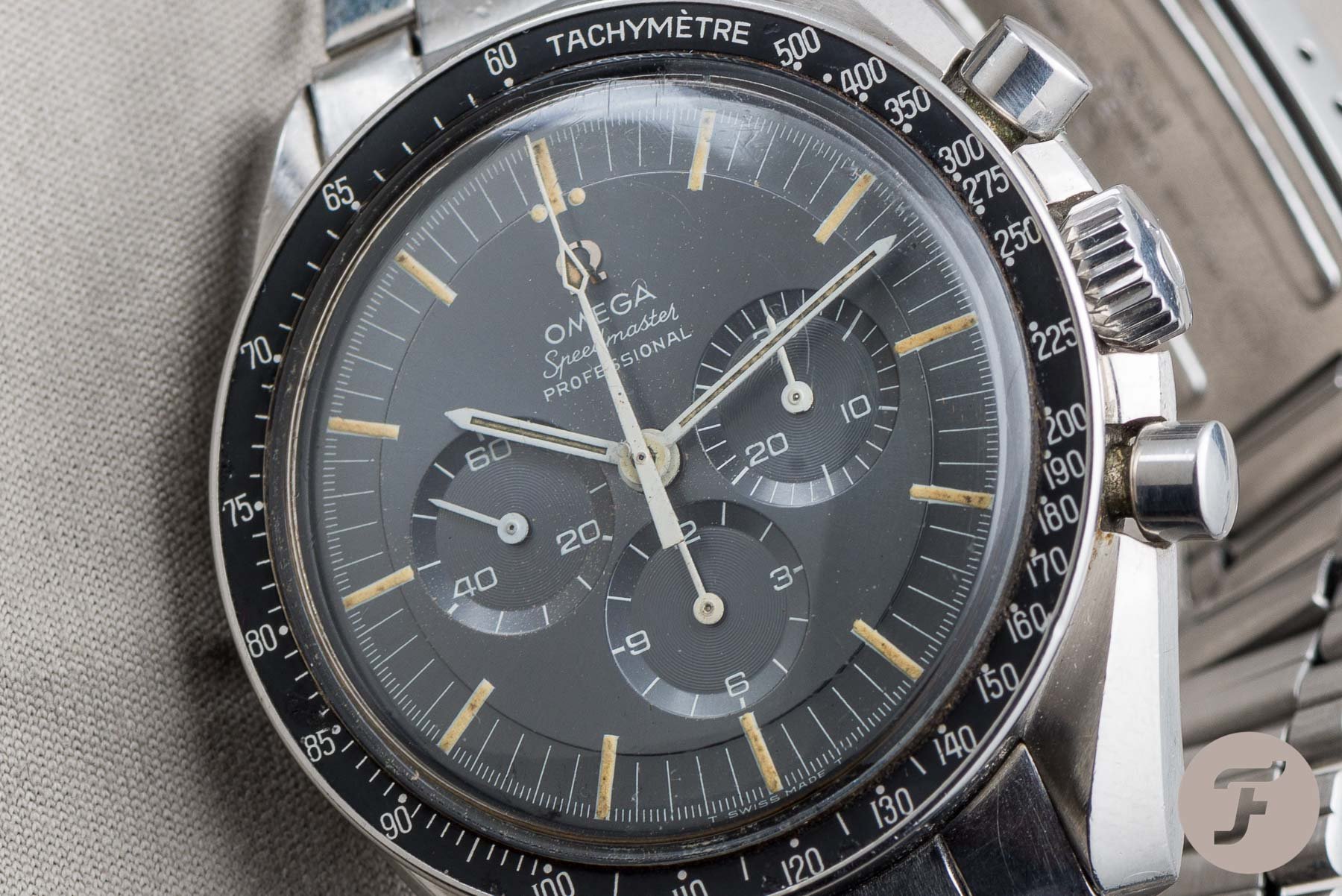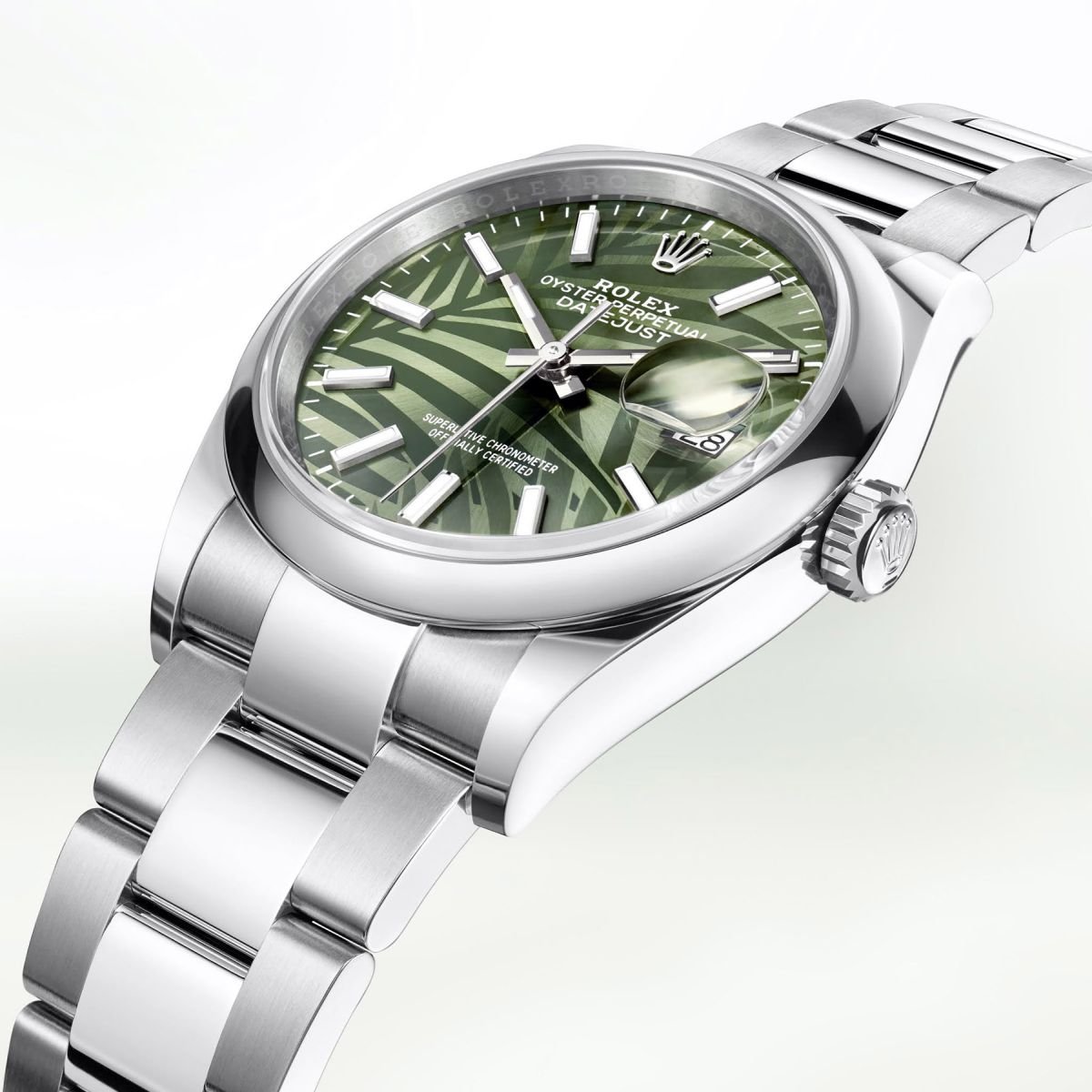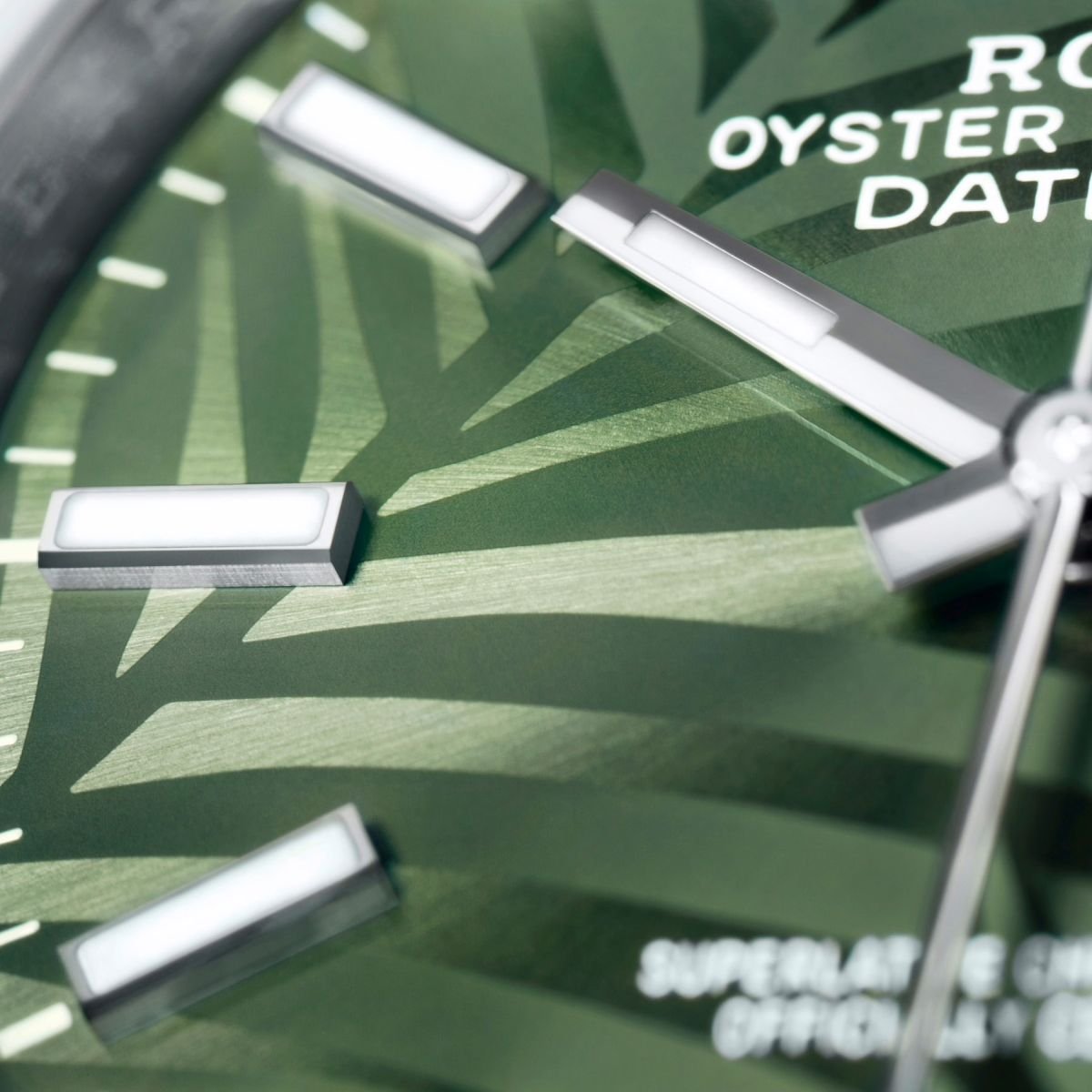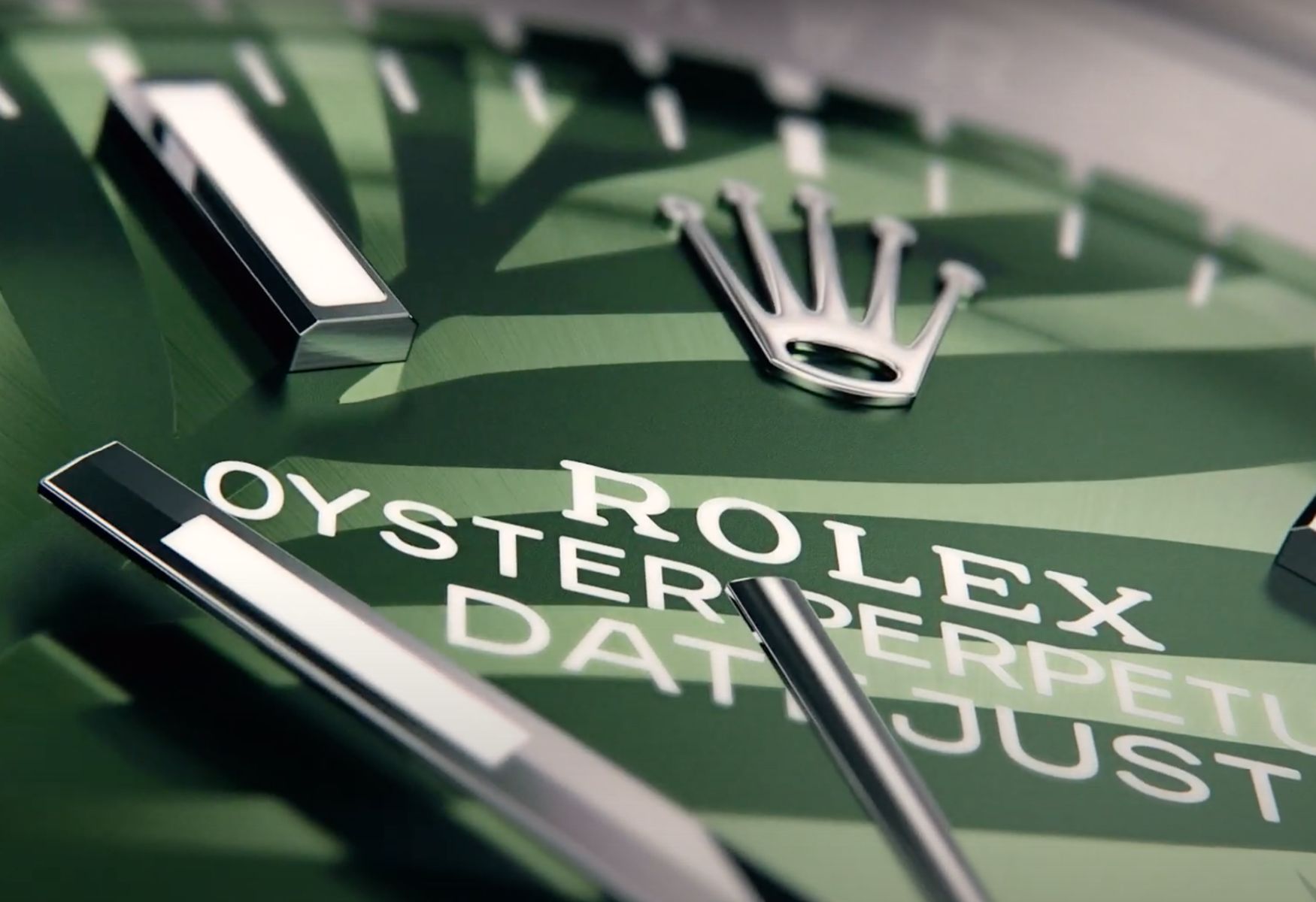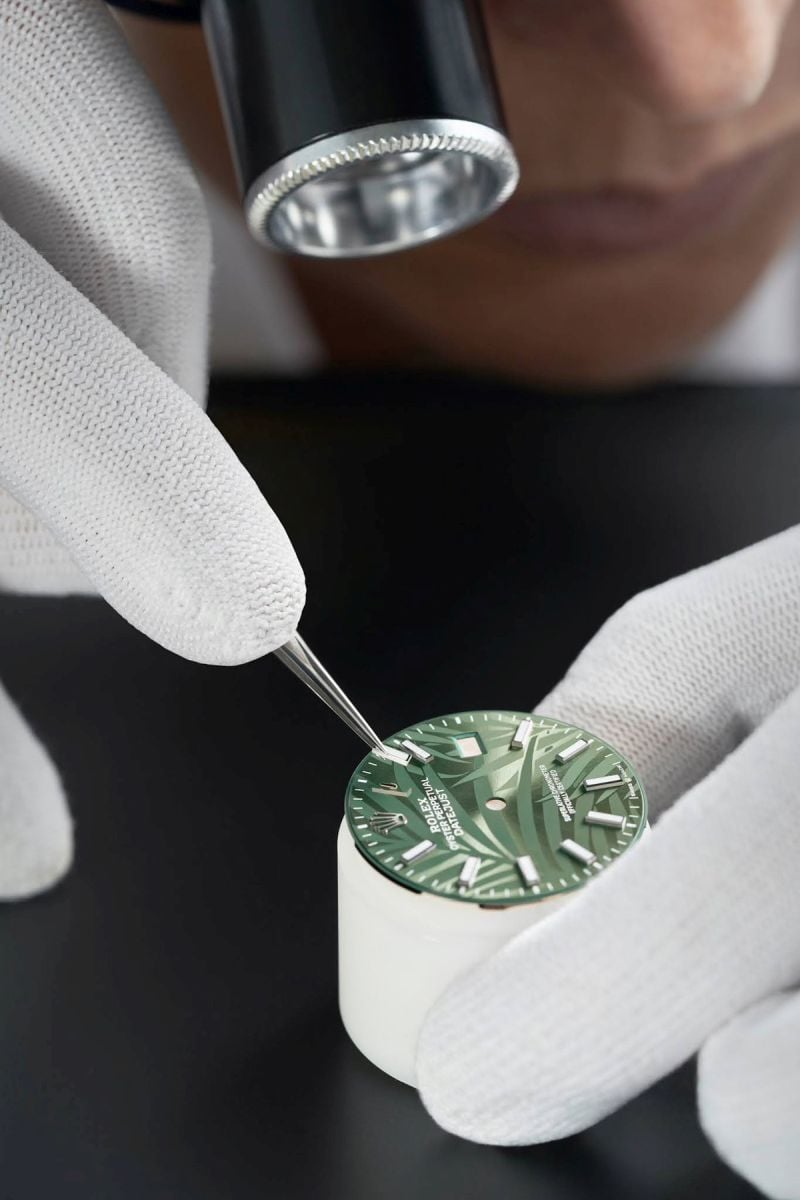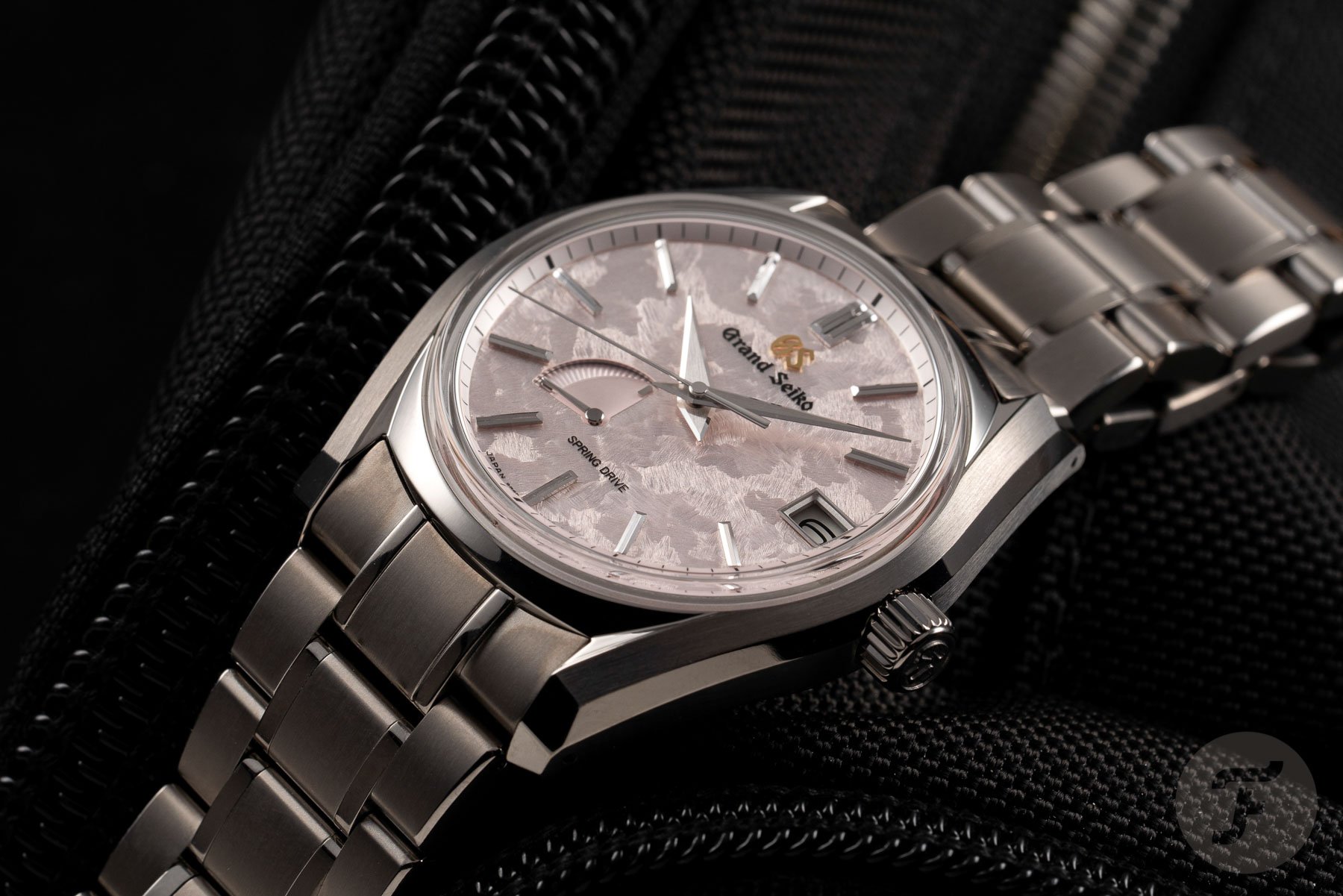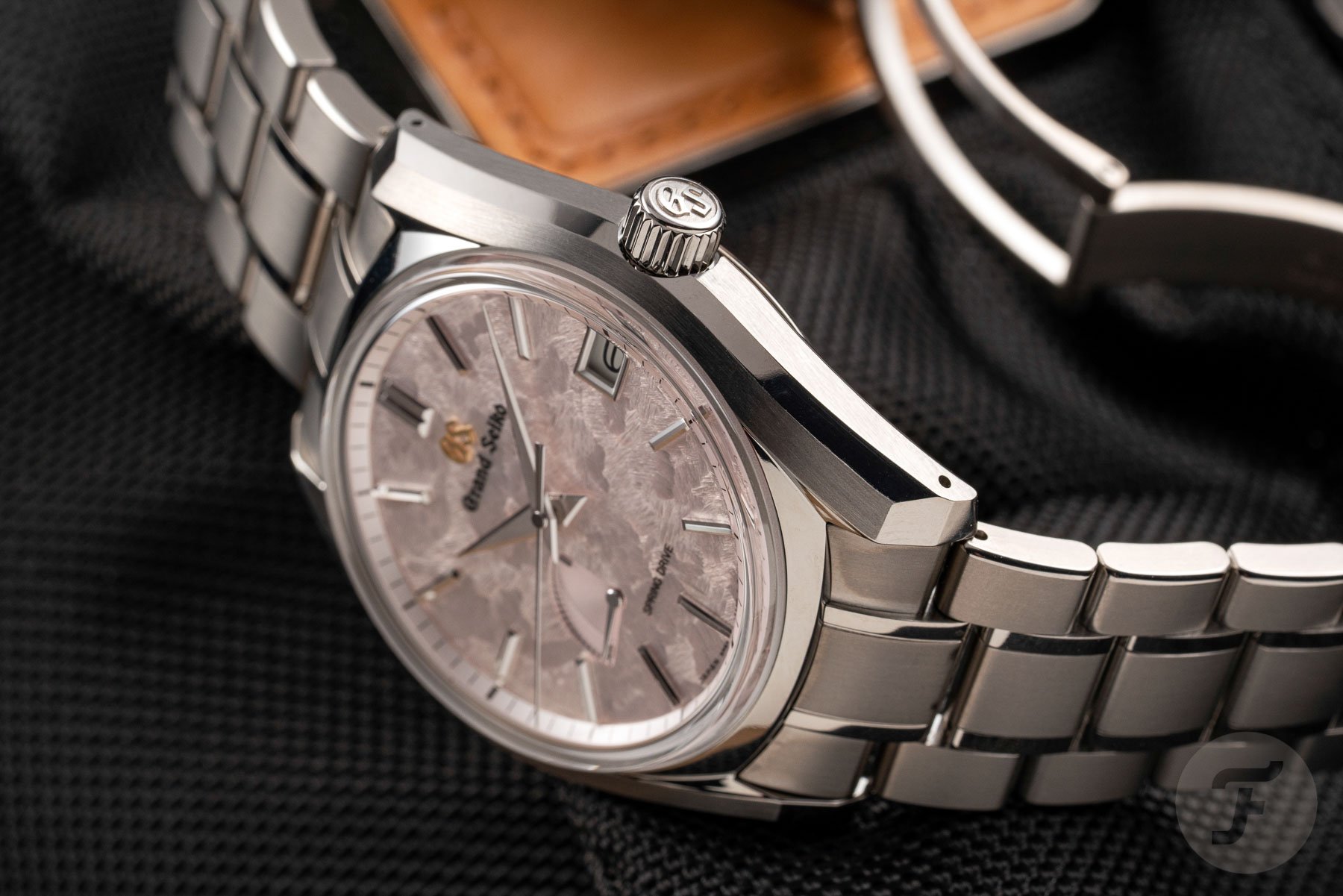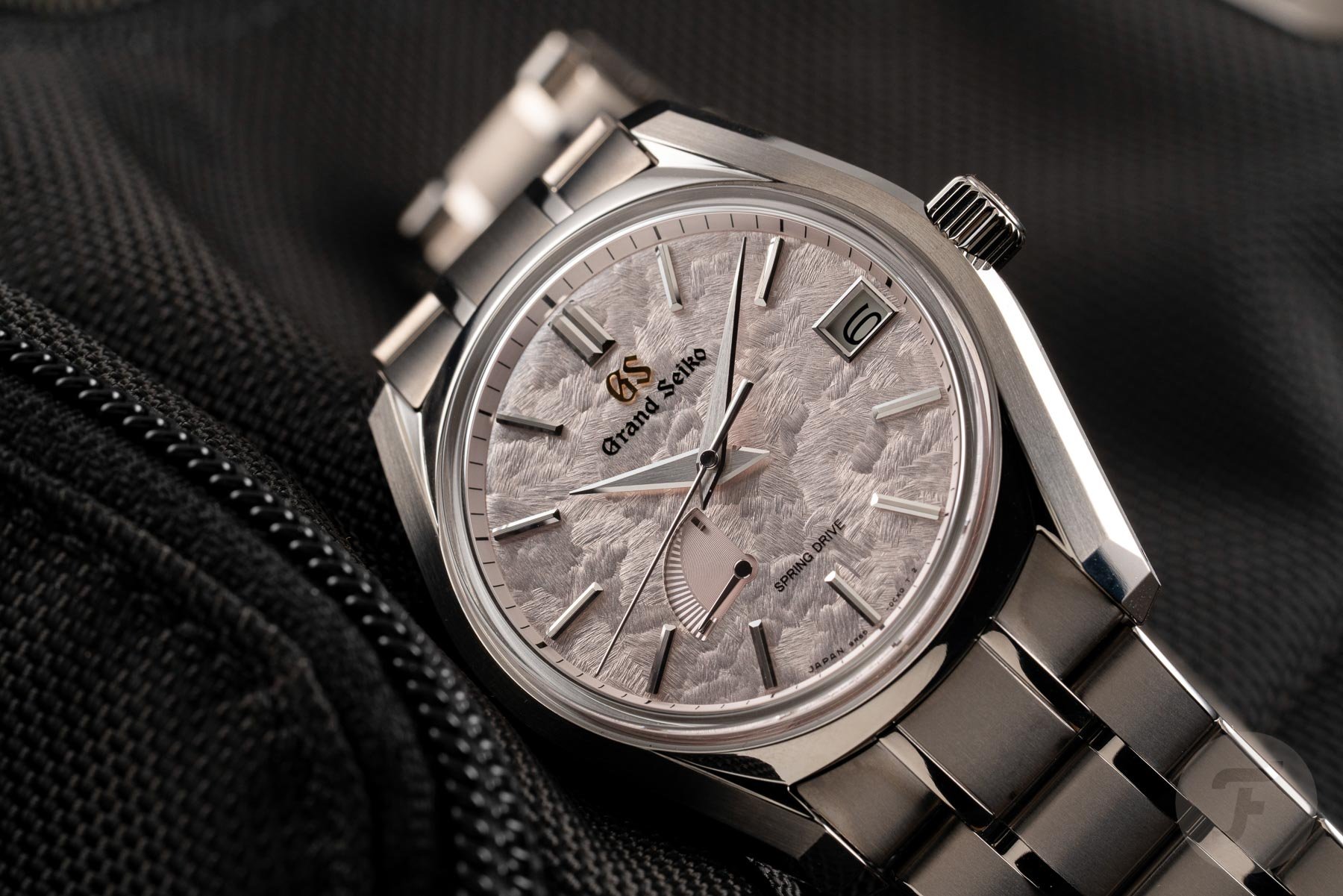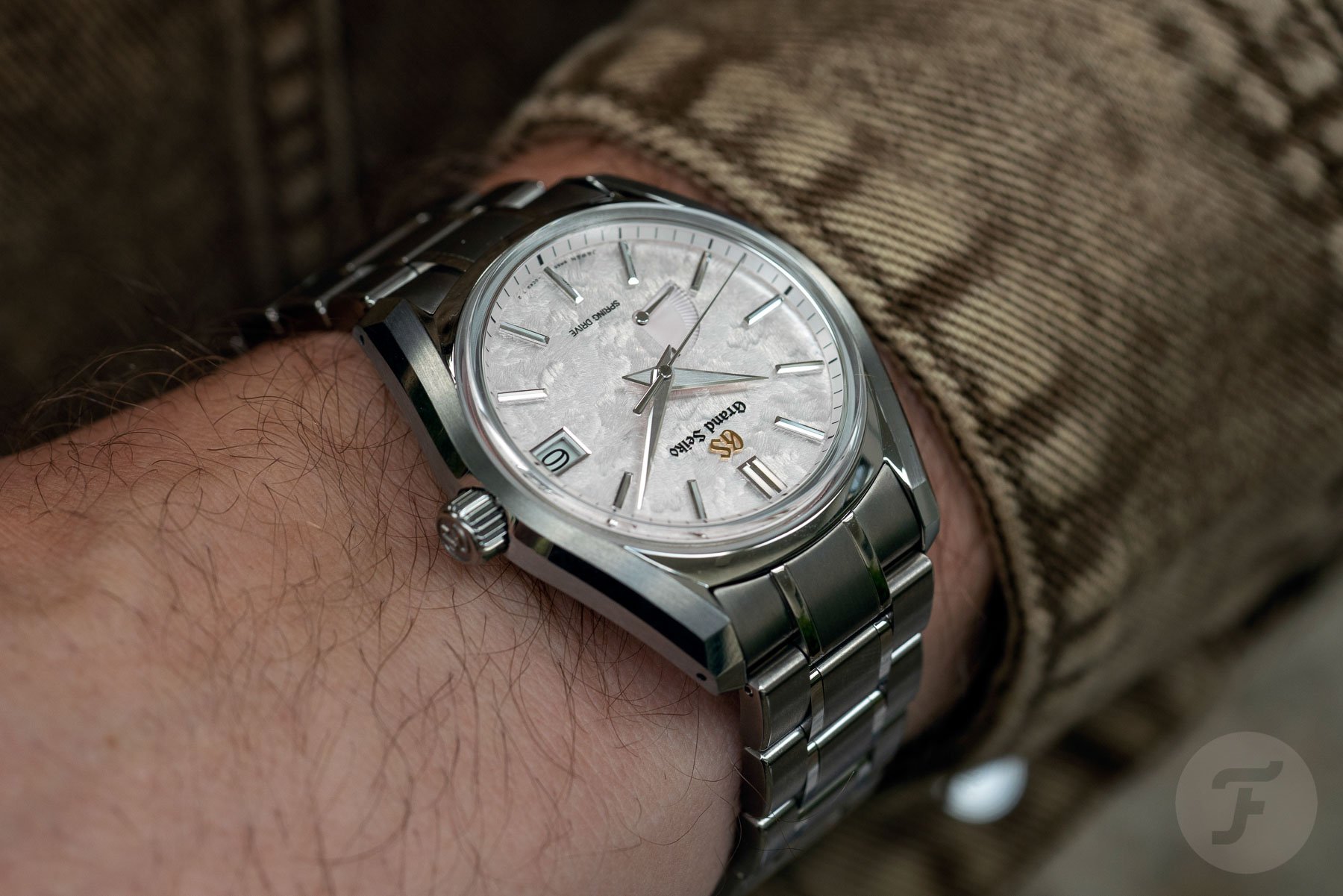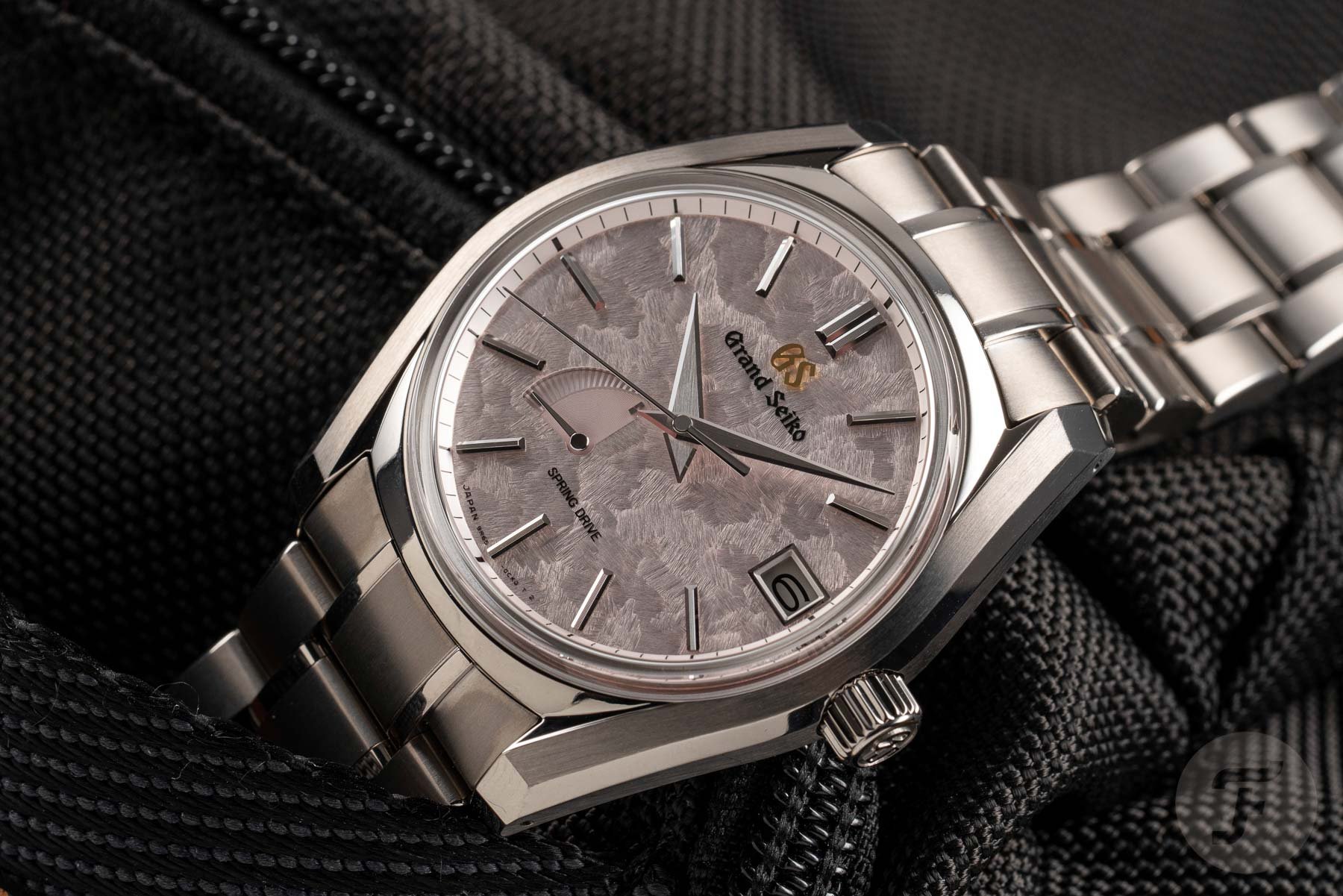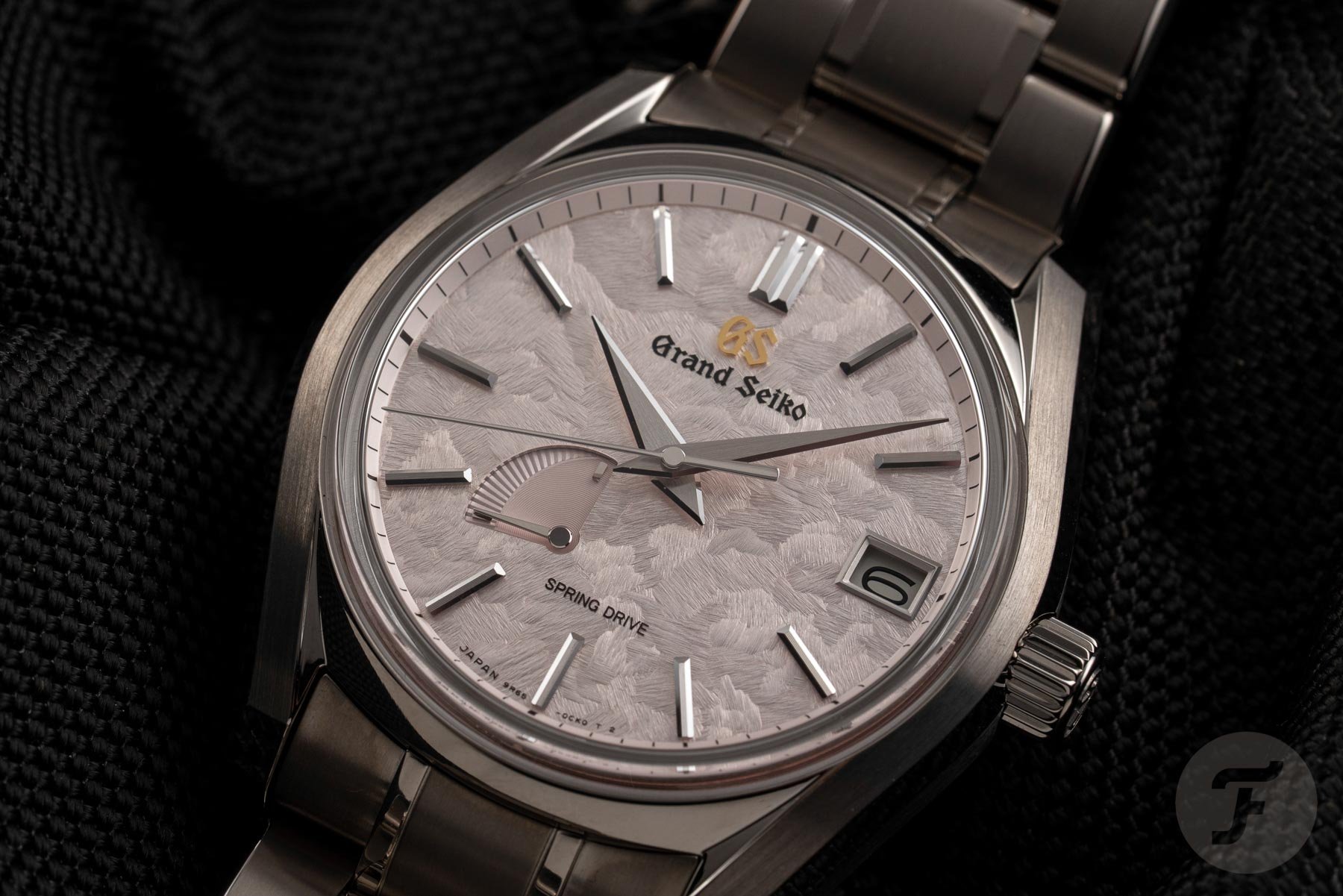Sunday Morning Showdown: Watches Inspired By Nature — Rolex Vs. Grand Seiko
In this Sunday morning column, two writers go head-to-head in an epic showdown. Strong opinions and hysterical hyperbole are welcome (so feel free to join in with the fun in the comments section below). And don’t forget to let us know which watches you’d like to see torn to shreds/effusively exalted next week. We’ll try to feature as many of our readers’ choices as possible. This week, we’ve got another head-to-head for you. The focus? Watches from Rolex and Grand Seiko with dials inspired by nature.
This week, we’re taking a leaf (literally) out of Grand Seiko’s book and featuring watches inspired by nature. We, of course, feature the name-dropped Grand Seiko, but Rolex also joins the floral flourish fray with its new stainless steel Datejust reference 126200. In the east corner, Jorg is backing the Grand Seiko SBGA413 “Shunbun”, which pays tribute to the vernal equinox. Essentially, the dial of this timepiece reflects petals of cherry blossoms falling onto freshwater, forming pink hanaikada (flower rafts). In the west corner, Ben is repping the Rolex Datejust reference 126200 with an olive-green palm-motif dial resembling a Tommy Bahama shirt. What drives the natural inspiration, and which watch delivers more effectively on its concept? Time for our writers to duke it out. But first, let’s touch on last week’s result.
Vintage or modern Omega Speedmaster
The debate between modern and vintage is one for ages. This is, of course, in part because the goalpost of what’s considered “vintage” or “modern” keeps moving with time. In this era, you can view a ’60s Speedmaster as a relic of yesteryear. Yet, as the Speedy is an innovative piece of watchmaking history that has stood the test of time, the design and principle continue in the modern world. The relevance and necessity of a mechanical, hand-winding watch are weakening, but the enthusiasm only grows stronger. In last week’s Sunday Morning Showdown, Thomas vied for the vintage Speedmaster and its never-ending lifespan. The Speedmaster was a critical piece of NASA equipment during the Space Race, and as such, it served a great purpose. Nowadays, a Speedmaster is a testament to its accomplishments and a great-looking wrist adornment for the modern buyer.
Robert-Jan argued that the Speedmaster’s improvements over 65 years of development are best showcased in the latest offering. For RJ, a modern Speedmaster is for everyday activities, whereas a vintage example “belongs in a museum” or at least somewhere safe for preservation. It seems our Fratelli side with RJ to the tune of 70% of the voting share. That’s not to say the majority dislike a vintage Speedy. But for availability, price, and mod cons, our readers prefer a modern Speedmaster. For today’s battle, both choices reside in the contemporary era. Therefore, features such as style, provenance, quality, and functionality are the main factors for discussion. Now, let’s get to it.
Ben: Rolex Datejust ref. 126200 “Palm”
So far, Jorg and I have covered two new Rolex novelties for 2022 — the Air-King and Explorer II. But both these models are refreshes on familiar designs. Not that this Datejust is a barnstorming model to shake the industry, but at least it offers a unique style in a standard package. Out of all the recent releases these past few years, this Oystersteel Datejust is possibly my favorite. But it took a while to grow (settle in for plant-based puns) on me. The palm leaf is an unusual motif and is certainly not for everyone. However, with such a renowned and recognizable design, the Datejust is ripe (I warned you) for a bit of embellishment. For many, it’s an insult to mess with a classic. Luckily, the GMT-Master II “Destro” this year bore the brunt of negative feedback at Watches And Wonders.
As the Datejust sits outside the Professional collection, there is room to bloom. And bloom it does, as this Datejust incorporates three shades of green in an intertwining palm pattern. The palm leaf is a hit of nostalgia for some, reflecting a relaxing life in the tropics. I can almost feel the warm sand and sea air with a rum punch in hand as I view the dial. When it comes to nature inspiration, Grand Seiko indeed comes to mind. But with reference 126200, Rolex demonstrates its capabilities in reflecting the natural world. The execution is also exquisite with leafy textures offsetting the sunray brushing of the main dial. There’s even a deep frosting around the date window magnified by the Cyclops lens. It’s impressive how playful Rolex can be with the Date-Date and Datejust without the shackles of its iconic sports watches.
An endless classic
Surrounding the sumptuous palm dial is the tried-and-true Datejust platform — a 36mm Oyster case with a screw-down crown and 100m water resistance. Powering the piece is the manufacture caliber 3235 with a 70-hour power reserve. This movement serves as the beating heart of many models in the Rolex catalog. But it feels especially at home in the Datejust, which was the brand’s first watch with a date window in 1945. The lineage is strong with the Datejust, but despite the funky dial, the core elements remain. I chose the smooth-bezel configuration with the Oyster bracelet for this showdown. The watch is also available with a fluted bezel and a Jubilee bracelet. You can mix and match these configurations, but the 36mm case persists. The 36mm model is the only way to get this dial — for now, at least.
It’s yet to be seen how popular this model will be, but I can see Rolex expanding to other case diameters. Yet, just as RJ found with the Day-Date, the 36mm size seems the sweet spot for these classic models. Thanks to the smaller dial size, the palm-leaf motif doesn’t outstay its welcome. But with the more restrained Oyster bracelet and steel domed bezel, the dial still takes center stage with fewer distractions. This Rolex is €6,900 from authorized dealers, but it currently trades with a €10,000 premium on the pre-owned market. Whether that’s due to recent inflation or dealers testing the waters, I can see the price dropping to sustainable levels soon. Now it’s time for Jorg to yearn for the Grand Seiko SBGA413 “Shunbun”. This titanium Spring Drive GS with cherry blossom dial plucks his heartstrings, but does it sing for you? Be sure to vote later on.
Jorg: Grand Seiko SBGA413 “Shunbun”
The Grand Seiko SBGA413 comes with a story, and it’s more than just the story of the incredible dial. In 2011, I made a road trip along the east coast of the United States. Over six weeks, a friend and I drove from Miami to Chicago. We even went to Toronto, Canada. It was the trip of a lifetime! One of the absolute highlights was our visit to Washington, D.C. During a visit to all the different monuments, my buddy Adrian and I discovered the cherry trees planted around the Tidal Basin. The former mayor of Tokyo, Yukio Ozaki, had gifted them to the city in 1912.
I have to say that witnessing the cherry blossoms fall was a magical experience. We hadn’t planned to see it, but the beauty left us awestruck while we just happened to be there on April 10th, 2011. We decided to sit on a park bench underneath the trees for a while. It was the perfect place to see the stunning trees and the mesmerized Japanese tourists. They were in awe of seeing the phenomenon they know all too well so far from home. Seeing that special memory come alive in a watch dial is stunning. As you will understand, Ben, it means so much more to me than just being a stunningly beautiful dial. It gives the SBGA413 a personal relevance that the Datejust cannot beat.
From the US to the rest of the world
The SBGA413 was part of a series of four special editions released to commemorate Japan’s twenty-four sekki, the periods that mark nature’s ever-changing seasons. Initially, the series was only released in the United States in 2019. Grand Seiko, however, decided to release the same series worldwide last year. The story of the dial is inspired by the Japanese spring season when the pink cherry blossoms fall on the water and become hanaikada, or “flower rafts.” After having witnessed the phenomenon myself, I can say that Grand Seiko did a fantastic job creating the dial. The colors, the texture, and the level of detail are exceptional.
While pink can be a divisive dial color, this dial has a magical touch. Depending on the amount of light, the dial changes color frequently. In low-light conditions, the dial is soft and blends in with the color of the titanium case and bracelet. Once the dial is in the sunlight, however, it lights up with a beautiful shade of pink. It is significantly brighter, but it is never too bright.
On top of that, the texture creates excellent depth and detail that will always have you looking at your watch. In my opinion, this dial is on the same level as the Snowflake and White Birch dials. The added personal memory makes it my favorite Grand Seiko dial out there.
Why titanium works perfectly for the SBGA413
But there is more to this watch than the dial, so let’s take a look at the specs of the SBGA413. It comes with a 40mm titanium case inspired by the incredible Grand Seiko 62GS design. It is 12.8mm high and has a lug-to-lug of 47mm, making it a great daily wearer. The stunning case design is free of a bezel, leaving room to maximize the impact of the dial. I love the case sculpture, and it sits so comfortably on the wrist. That is also a result of the titanium material that Grand Seiko decided to use for the watch. It makes the watch lighter than a stainless steel watch and, therefore, great to wear. While I’m not a fan of all titanium watches, the SBGA413 works very well.
And other than the reduced weight, the hue of the dial and titanium work complement each other remarkably well. The finishing of the titanium is stunning too. Inside the case, Grand Seiko equipped the SBGA413 with the Spring Drive caliber 9R65. It has 30 jewels, a 72-hour power reserve, and a date and power reserve complication. As with most Spring Drive watches, the power reserve indicator perfectly integrates into the stunning dial. And you get all this for €6,700. It’s hard for me to fault this watch, Ben. A micro-adjust on the clasp would have been nice, as would a fully brushed finish on the bracelet. But they are minor things for me because I don’t need them to make this watch perfect. For me, it already is. The dial and its personal story make sure of that.
Final bout
Jorg: I have great love and respect for the Datejust, Ben. At one point, I will add one to my collection. But as you will probably understand, this Grand Seiko SBGA413 is the winner for me. Even if the Datejust didn’t come with the tropical palm-leaf dial, this Grand Seiko would still be my first pick. When you compare the dials of both watches, I feel a tremendous difference in approach. Where Rolex has made a fun dial, Grand Seiko has used the concept of nature to execute and integrate a stunning dial perfectly. Overall, I feel it makes for a more mature watch, and with high prices, I like to buy serious watches. This is why I prefer the Grand Seiko all day, every day, and twice on Sunday!
Ben: While the Japan Seasons collection was a gorgeous lineup, I still feel Grand Seiko has overdone the “inspired by nature” concept. I prefer the Spring Drive models in the sekki series over the Hi-Beat models. But as captivating as that story from Jorg is, I don’t quite have the same nostalgia for the cherry-blossom spring dial. I last visited Washington, D.C. during peak summer with unbearable humidity. Winter is my thing, so the SBGA415 “Taisetsu” with its gloomy gray dial is for me; it goes much better with my personality. But if I have to endure the heat, I prefer to be near a beautiful ocean, and nowhere would I rather be than in the Caribbean. That’s why the tropical Rolex Datejust is my choice.
But what about you? Vote now, and let us know why in the comments.

